Flowers are one of the most beautiful creations of Mother Nature and everyone just loves the sight of them any day! If you are planning to plant a flower garden to relax and unwind after a long day, you have come to the correct place! We are here to show you the 60 different types of flowers that you definitely need in your garden! So, get your gardening tools and be ready to tilt the soil!
1. Stonecrop
Known for its stone-like appearance, the Stonecrop will definitely be a great addition to your lovely garden! They will add a great touch to your fencing and are great to plant beside the rocks in your garden. The light yellow color of the Stonecrop will make it brighter too! They need a cold climate to survive despite the exposure to the sun. This is the type of flower that will grow around 24 inches tall.

2. Tulip
Get the warmness in your relaxing spot- your garden with the popular and lovable Tulip! The warm colors of bright red, orange, pink, yellow, and white of the Tulip are there to cheer you up! Did you know that Tulip had its origins in the central part of Asia in Turkey in the 16th century in the Ottoman Empire? Back then it was a wildflower and love it is the pride of any nature lover! Spring and Summer times are the best to grow to this type of flower! Tulips require loose and well-dried soil. It can never grow in soggy soil. Tulips need a lot less water than you think. Just a weekly sprinkle and occasional rainwater are more than enough for this bright flower!

3. Rhododendron
Rhododendron which translates to Red tree is a popular shrub found in southern Asia, mainly in China and Bhutan. It is an evergreen plant. Rhododendron can grow from 3 feet up to 20 feet in height. It would be best to provide it partly sun exposure. These red flowers require soil rich in organic matter, and moist for better growth. Water your plant twice a week during the early days for stronger roots than once a week.
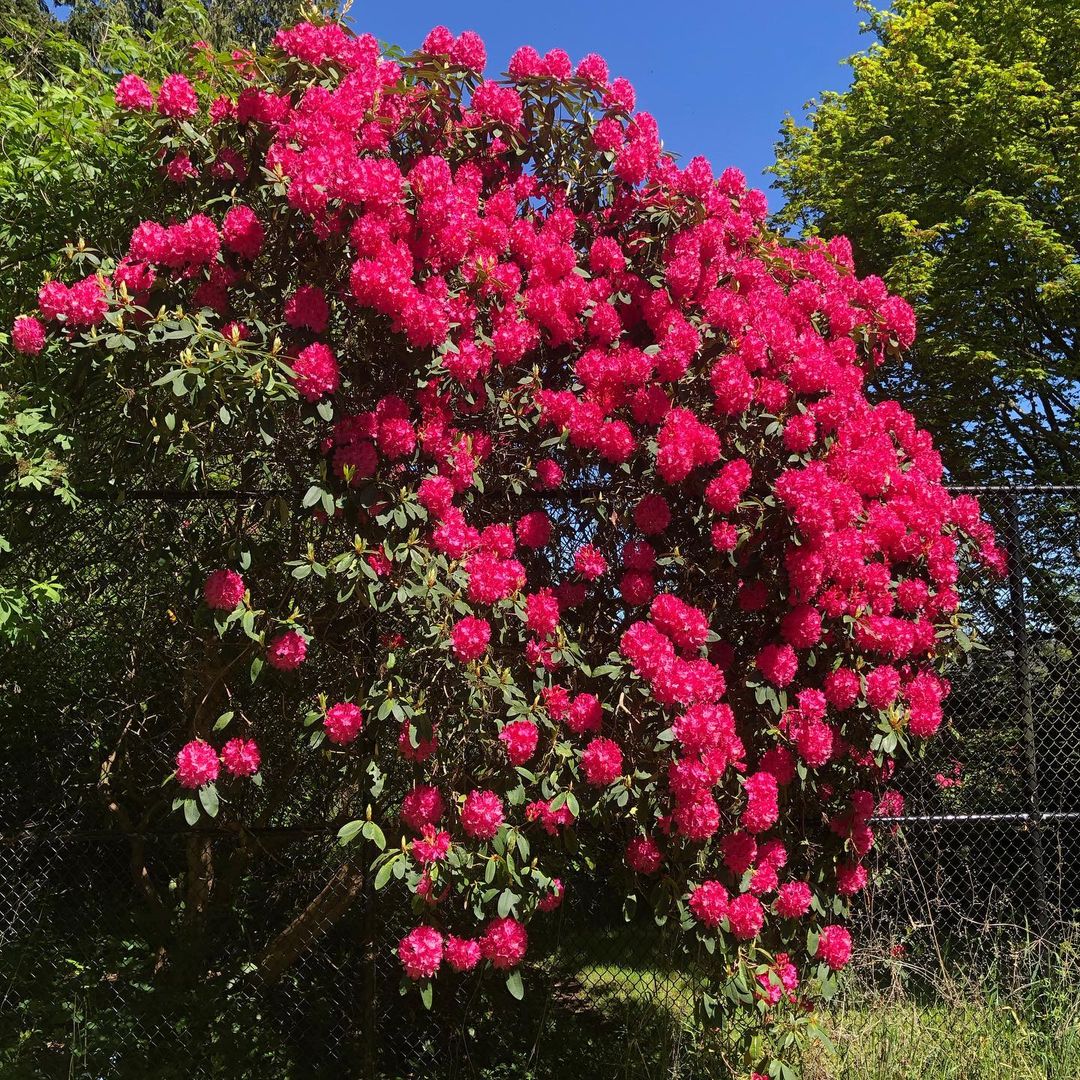
4. Salvia
This flower finds its origins in Native Mexico and now is in the list of the 60 different types of flowers today with us. It can grow up to 2m and this adds a great collection to your garden! Salvia requires well-drained soil and full exposure to the sun for good growth. You can work with partial exposure to the sun in case the Salvia’s are light in color. They also do not require a great of water to survive. Start watering the Salvia’s with 1-inch water every 7-8 days. Then, you are decreasing the supply during the rainy season.

5. Peony
Peonies have their origins dating back to 1000 BC in the ancient kingdoms of China and later this flower reached the other parts of Asia, Europe, and America. If you are a lover of the warm season of spring, then this flower is certainly made to be planted in your garden! Peony requires slightly acidic soil around PH 6.5 to 7 along with light composting matter. Reserve a sunny spot for this pink delight- as peonies require at least 6 to 7 hours of sun exposure to grow healthy!
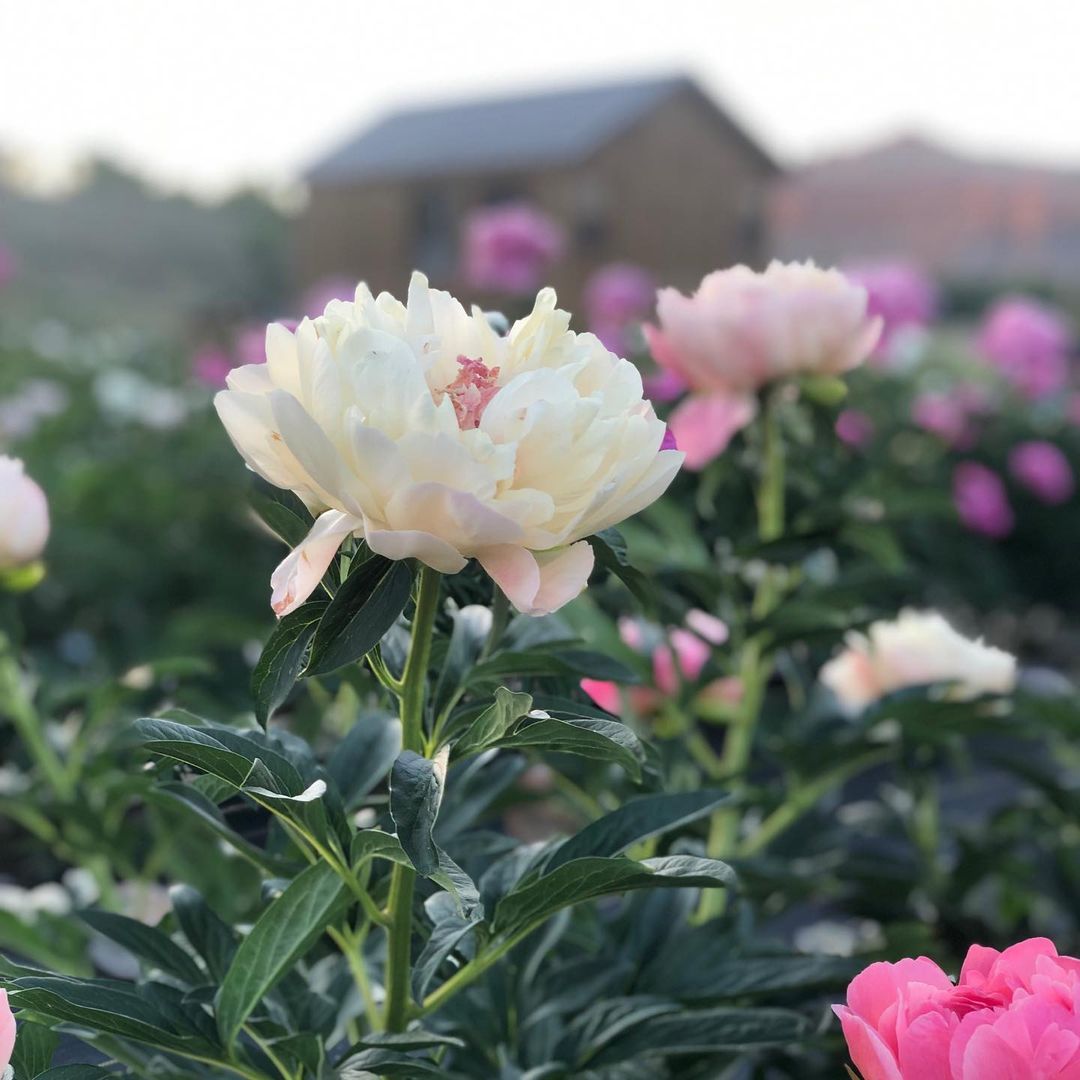
6. Ice Plant
Ice plants belong to the fig and marigold family and one of their popular names is carpet weeds. They bloom around spring or even early summer with their bright colors of purple, yellow, and pink. These are the types of flowers that do not survive well in wet soils and they also prefer the slight shade of the sun.

7. Fuchsia
Bring home the delicacy of Fuchsia, a flower having origins from South America to New Zealand. Do not expose to the sun for long periods of time and the preferable time for exposure would be the early hours of the morning. These types of flowers have a chance of getting sunburn so avoid bright and hot afternoon sun at all costs. It would be best if your soil is moist but has all its wetness drained as this flower prefers soils ranging from sandy, to clay, to even loamy. Water twice a week in the initial stages and then lower the cycle when and water when the plant gets dry.

8. Azalea
Mainly originated from Japan and some are also found in North America. Azalea flowers represent gentle nature and love for someone. This makes it the best gift for your loved one as a part of Mother Nature. A well-drained and acidic soil makes the perfect home for Azaleas. Regular watering along with a few hours of exposure to the sun will give a healthy and loving flower bed of Azaleas!

9. Hyacinth
Hyacinths represent beauty, pride, power, compassion, and beauty. They had their origins in native tropical Africa. You will mainly see these flowers in the Church. These small flowers can handle a little bit of sun and require moist, well-drained, and slightly acidic soil. Add to the early and springtime beauty to your garden with colorful Hyacinths.

10. Lavender
Lavenders are one of the most loved and essential flowers of all time. These are used for medicinal and healing purposes too. Having their origins in the native part of northern Africa, these bloom around late spring and early summers. Lavenders require neutral or alkaline soils, mainly dry and well-drained soil, along with full exposure to the sun. You can provide them slight shade during hot summer afternoons. As they are used to surviving in low water conditions, you do not need to water them as much. Once or twice a week is more than enough for your favorite purple flower!

11. Four O’Clocks
Popularly known as Mirabilis jalapa, the four o’clocks are blessed with different origins ranging from all North, Central, and South America, to Chile, and even Peru. These are one of the types of flowers that would be a great collection for your summer special garden. Regular watering is a must for the proper growth of Four O’clocks. You will require dry acidic to neutral soil that is well-drained. The colorful magical pink, yellow, white, and reds of the Four o’clock are perfect to suit the hot summer vibe!

12. Lilac
Lilacs have their origins right back in Eastern Europe and some parts of Asia. The perfect blooming period of lilacs would be around the middle to late springtime. Lilacs require slightly alkaline soils along with moisture, and high organic soil matter in abundance. It is best for your flower to provide it with an infrequent but heavy water supply every 10 to 12 days till the blooming time comes. Lilac is one of the most beautiful types of flowers to bloom in springtime.

13. Aster
Asters are said to be originated from Northern America but they do share a mythological story from ancient Greek mythology. Asters are mainly found in purple, red, pink, blue, and lavender colors. These require moist and loamy soils to grow. On hotter days, it would be best if you provide a little shade too. Watering around one inch of water every week would be the best for the initial stages. Aster mostly blooms around the late summer to the early fall season.

14. False Indigo
Commonly known as wild blue indigos, these are great collections to the grass side of your garden. They have an origin in native America and bloom around March to late May. You can provide full exposure to the sun without worrying about the withering of the plant. The soil PH should range from neutral to slightly acidic, along with the perfect amount of dryness. Regular water in the first year would be enough for the perfect growth of your False Indigo.

15. Sunflower
How can one forget to include these special flowers on the list of 60 different types of flowers? These have their origins from Native northern to central America. The soil must be enriched from the high organic matter and compost, and along with that the soil must be loose and dug well. Do not water frequently, just once a week is enough for steady growth. Sunflowers usually bloom in summer or early autumn.
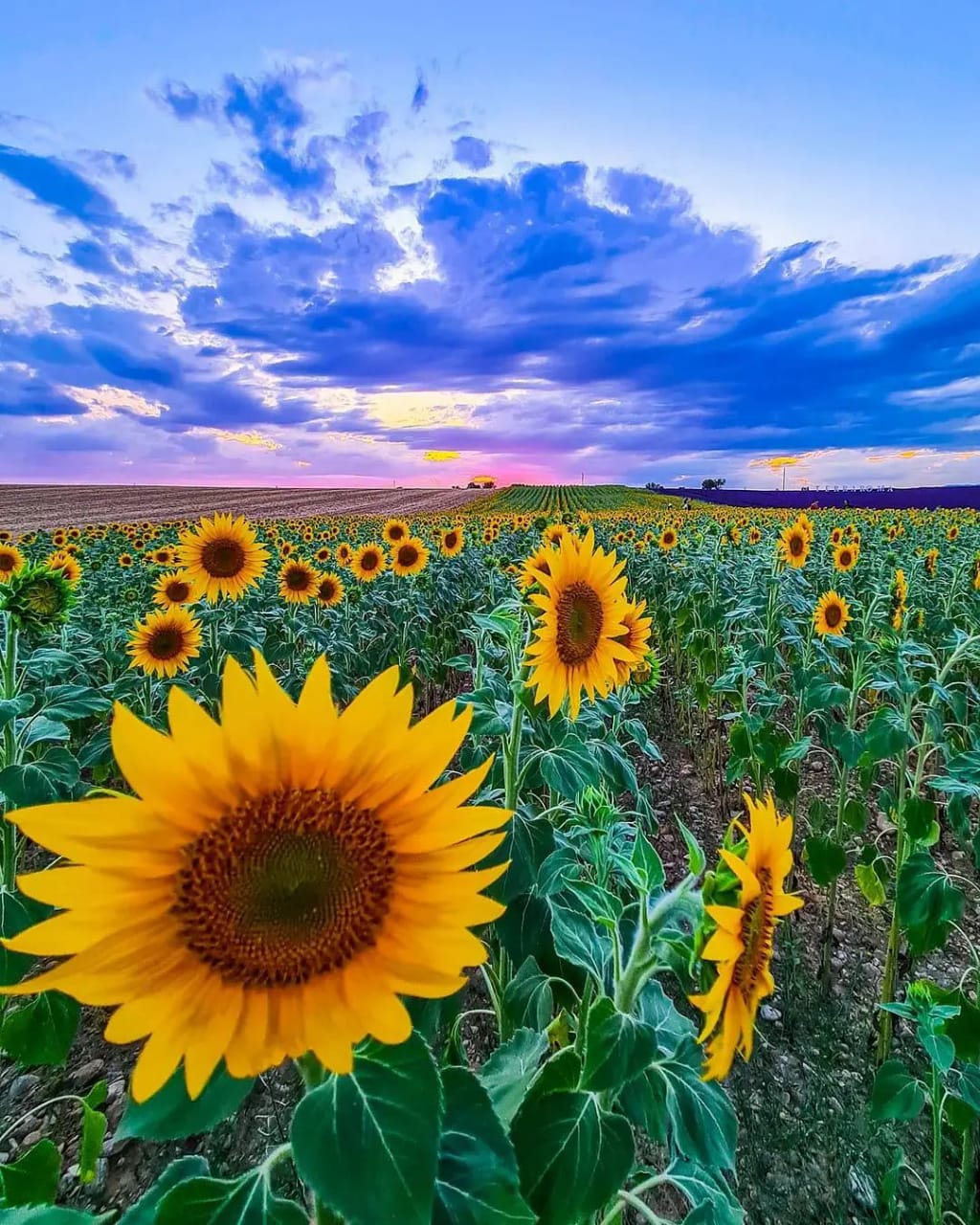
16. Balloon Flower
Commonly known as the Chinese bellflower, this flower has its origins in East Asia. You require to keep the soil moist but these types of flowers can survive a little bit of water shortage easily. They can grow up to 18 inches, and that would be a great addition to your garden. This blue, white, purple, and pink colored flower blooms in summer.

17. Allium
The name Allium is originated from the Latin language which translates to garlic. The large, delicate flower blooms in early summer days or late spring days. Alliums can survive in full sun exposure and can grow up to 120 cm. Give them water once a week so that the roots can grow steadily.
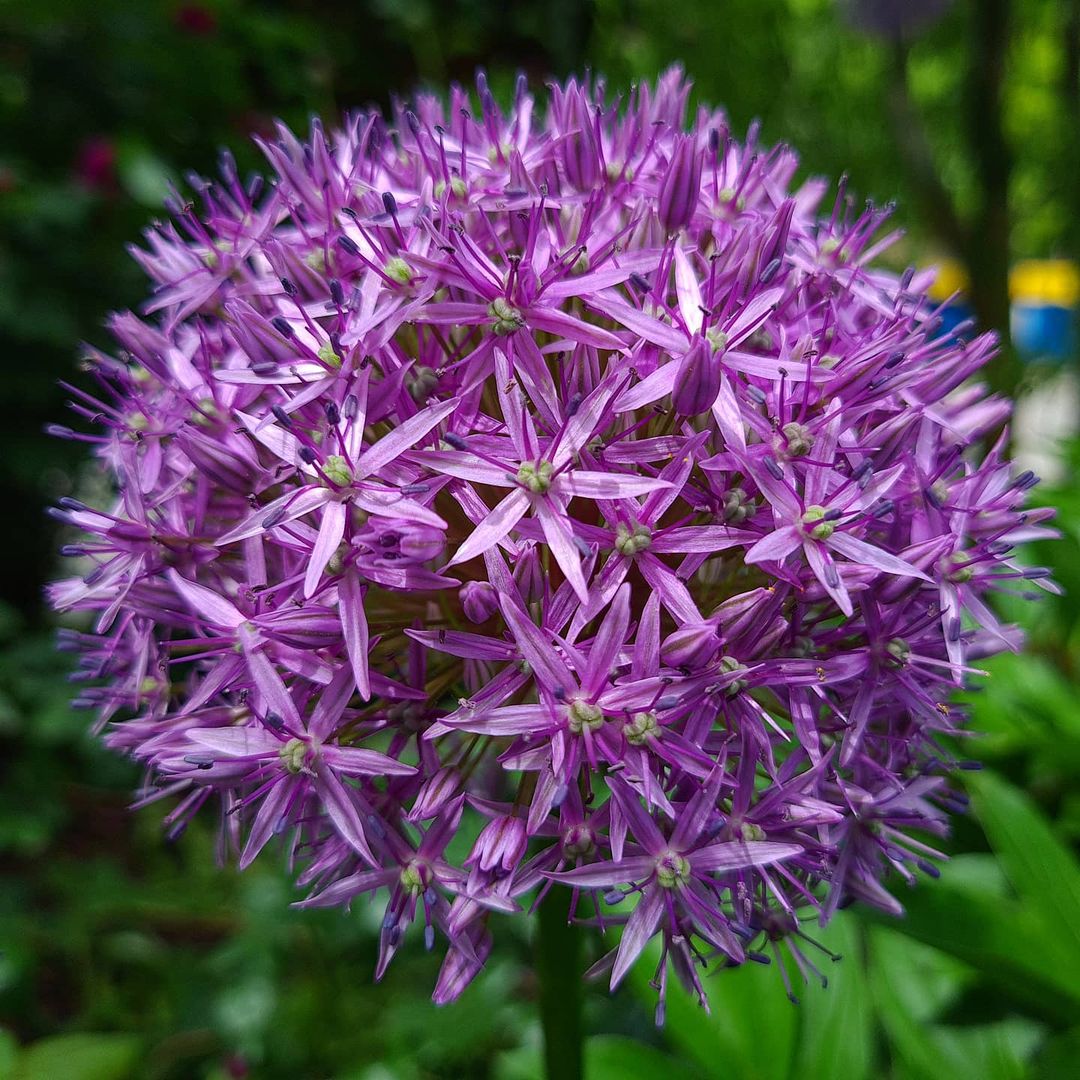
18. Caladium
Caladium, also known as elephant’s ears, or angel’s wings popularly, is a red flower with green-colored borders on the petals. They bloom around the early days of autumn and would certainly be a sight to see. Caladiums fall under the category of indoor plants and do not require too much sun exposure. You have to water them regularly, once a week at least to ensure healthy growth.

19. Lupine
Lupine has its origins in North America and is now commonly found in both North and South America, along with some parts of North Africa. Lupines can grow excellent in soil that is rich in nutrients and is moist. It requires moist and well-drained soil, which has an acidic or neutral base. You will find lupines blooming in the late springtimes and early summer days. Keeping the soil moist is a must for the growth of these multicolored flowers. You can water them on the gap of 4 to 5 days per week for steady growth.

20. Pansy
Pansy, also known as Heartsease in certain parts of Europe and Asia, is a great addition to your safe haven. The blooming time of Pansies is around late springtime and early summer days. Pansies can grow up to 12 inches and require a little exposure to the sun, mainly the early morning light rays. Water generously per week for active growth.

21. Hollyhocks
Hollyhocks are popularly also known as Malvaceae. These tall flowers are native to Europe and Asia. Some species have their home in North America. They bloom around the middle months of summer and water them 2 to 4 times per week to get healthy growth. They require soft and moist soil but take care that you do not overwater your Hollyhocks.

22. Lantana
Lantanas have their origins from America, Africa, and even some parts of India. Lantanas require warmer climates to grow, so you can find them blooming around the spring season and even all year long in the warmer countries. They do not require much care, so watering them once a week is more than enough.
23. Forsythia
Forsythia is a bright yellow-colored flower, which is native to Asia and certain parts of southern Europe. These types of flowers are suitable for outdoors as they have a massive growth rate and can grow up to 10 feet. Forsythias can start to bloom around the middle of March and the start of April. They require a good amount of moisture on the soil, so you should water them 2 to 3 times per week to get healthy growth.

24. Lobelia
Commonly known as lobelias, these indoor flowers contribute greatly under medicinal requirements. Lobelias are found in tropical environments mostly and can survive in lighter sun rays and partial shades. The soil should be moist and you should water once a week for best results. These are the types of flowers that fall under the category of flowers blooming in the middle of the summer season.

25. Phlox
Phloxes are generally found in the shades of blue, indigo, purple, bright red, and pink. These are found in America widely. Phloxes bloom around the late spring season and early summer days. Phlox can tolerate sun up to a certain limit, so do not expose to hot sun rays. Water regularly in the initial days, around once or twice a week.

26. Marigold
Who does not love the lovely orange shades of the Marigold in their garden? Marigolds bloom twice a year, around the middle of October in the winter season. And around the middle of February and early days of March in the summer season. Generously water once a week, as Marigolds do not require water as much. Providing full exposure to the sun to even partial exposure is enough for growth.

27. Thrift
Thrifts are found in some coastal parts of the United Kingdom but mostly in Scotland. These are the types of flowers that fall under the category of spring season flowers. Thrifts are found in different shades of pink and are usually average in height. They grow up to 3 feet. Thrift flowers will require moist soil and partial to full sun depending upon the climate in your surroundings.

28. Rose of Sharon
Rose of Sharon is one of the most delicate flowers you will ever see. They are light in color and bloom around the middle of summer and sometimes even the early days of winter. You need to put them in full sun mostly but they can grow under partial shade too. These delicate flowers require soil full of nutrients and moisture for healthy growth.

29. Yarrow
Commonly known as Carpenter’s weed, nosebleed, among other names, Yarrow is one the most beautiful additions to your gardens. Yarrows come under different shades of white, red, yellow, gold, and even orange. Yarrow will bloom around the late spring season and the early days of summer days. These are the types of flowers that do not require much watering. You can water them once a month and still get a steady growth.

30. Hydrangea
Hydrangea commonly known as Hortensia is native to America and Asia. They can grow up to 10 feet and are suitable for outdoor. Hydrangeas require not too much sun and not too little of it too. They fit somewhere in the partial sun exposure stage. Hydrangeas also need soil that is well-drained and moist. You need to water them regularly at least once or twice a week for proper growth. The blooming season would be around summer till the late fall season.

31. Daylily
Despite the name, daylily, this flower is not a lily at all. This flower comes in different shades of yellow, pink, and red. Daylilies bloom around the months of June and July. It is also found that some species bloom in the fall season. Daylilies are very easy to grow and require very low maintenance. You should water them once or twice a week for steady growth. Get soil high in nutrients and organic matter. It would be best if the soil is well-drained and a little moist.

32. Crocus
Crocuses are found in different colors type of flowers shades of purple, yellow, lavender, and white. These would be a great addition to your garden. These bright flowers are native to the Mediterranean, the Alps, and even some parts of Southern Europe. Crocus bloom around the pleasant spring season and sometimes the late winter season. On average, you should water them once or twice a week for proper growth.

33. Hellebore
Hellebores have their origins from Native Europe and Asia. This beautiful flower requires partial to full exposure to the sun’s rays. Hellebore is the type of flower that blooms during the winter season and the blooming season can go up to the early days of the spring season. Around one inch of water once a week is more than enough to get healthy growth. Hellebores require moist and well-drained soil for survival.
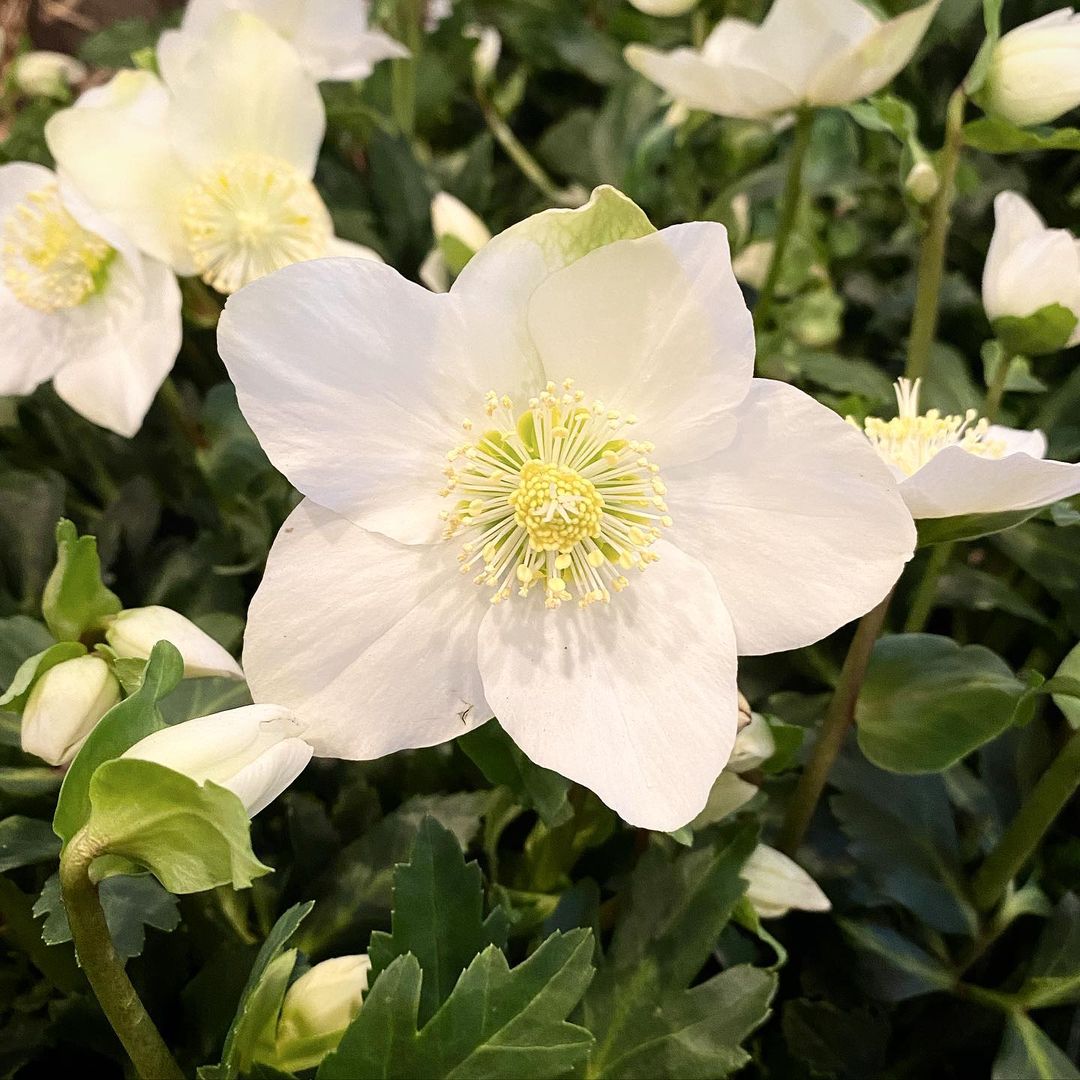
34. Begonia
Begonias are native to warm climatic regions, like tropical places. They can grow up to 2 feet in height. Your begonia is going to love the partial sun exposure or even the early morning sun exposure that is soothing. When it comes to watering Begonia’s, remember that overwatering is never good, as it will cause them to wither. Water every 4 to 5 days for best results. Begonias bloom from the late days of the spring season throughout the early days of the fall season. Begonia comes under the different shades of yellow, pink, orange, and even white.

35. Chrysanthemums
Chrysanthemums are also called mums in layman terms. These energetic flowers come in multiple colors like yellow, pink, red, purple, orange, and even white. They are native to some parts of Europe, to Asia, but mostly South East Asia- China. The Chrysanthemum flower begins to bloom around the middle or even later days of July. Sometimes they even bloom around the fall season.

36. Astrantia
Astrantias are native to mostly Central parts of Europe. Some species are spread all around Europe. These are mainly a decorative kind of flower species, and love to grow in partial sun exposure. Astrantias are quite easy to take care of and grow. When it comes to watering them, you can water them generously once or twice a week, depending upon the climatic conditions. Astrantia will require soil that is well-drained, soft, and loamy to grow.

37. Zinnia
Zinnias are one of the most beautiful flowers on our list of 60 different types of flowers today. Zinnias are found in the different shades of orange, red, pink, yellow, lavender, purple, along with white. They are found in the different regions of Central America up to the parts of Mexico. In good climatic conditions, they only require water once per week to grow. Proper sunlight, as well as soil, enriched in organic matter, well-drained, moist, and fertile helps the Zinnia to grow easily. You find them blooming around the early days of the spring season.
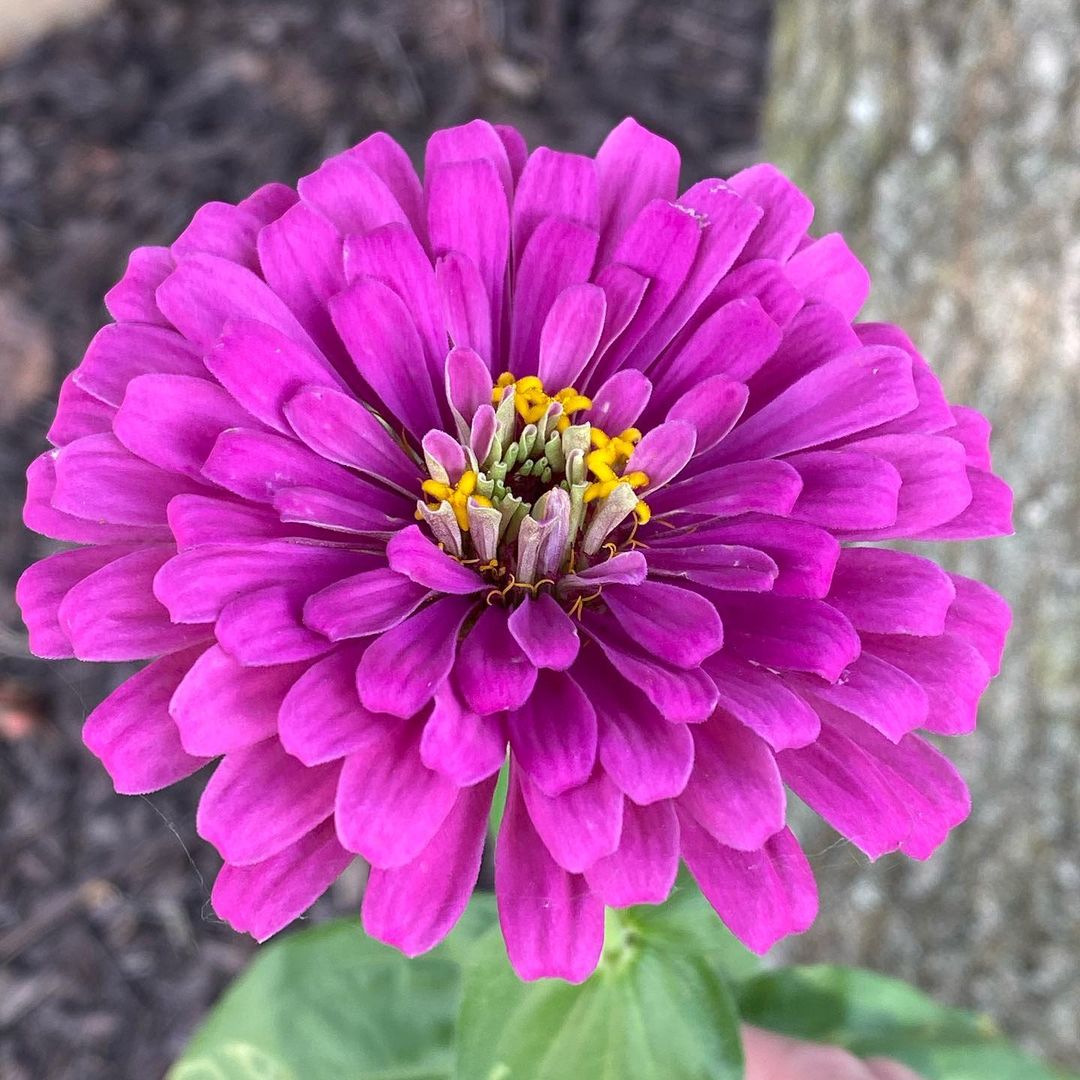
38. Columbine
Columbines are known for the special shapes of their shapes and they certainly would be a sight to see in your garden. Columbine is found in the different shades of purple, orange, and red, yellow, even green, amongst other pastel colors. In the initial stages, you will need to water them around once or twice a week. Columbines require a type of soil that is moist and wet but not too soggy as it can hinder growth. They bloom around the spring season and the summer season.

39. Fan Flower
Fan flower has another popular name- beach cabbage and is found in the tropical regions. They can grow up to 3 feet in height. Fan flowers come under the different shades of pink, white, blue, and purple and require an acidic type of soil to grow. These decorative flowers have 3 different blooming seasons starting from fall, to spring, to the summer. It depends upon the climatic conditions and species of flower.

40. Catmint
Catmint is very closely related to your cat’s favorite thing in the whole world- catnip. This flower can be found in the different shades of purple, pink, white, and lilac. The flower is native to different continents like Europe, Asia, and Africa. Catmints bloom in the spring season and require soil that is dry and fertile. It is important that you water your Catmint plant at least twice per week for healthy growth.

41. Petunia
Petunias are usually found in the shades of red, purple, white, pink, blue, and yellow. It is a flower native of South America and is now widely popular around the world. Petunias should be watered at least once a week for good growth. It is important that you prepare the soil in such a way that it is rich in organic nutrients and at the same time is acidic in nature. The blooming time of Petunia would be around late spring season till early winter season.

42. Rose
Roses are one of the most loved and adored flowers of all time. They are present on every special occasion and people gift them to their loved ones all the time. So, how could we forget to include Rose on our list of 60 different types of flowers? There exists an entire color palette for the shades of Roses right from red, to blue, to yellow, to pink, to white.
When it comes to checking on the blooming period, it actually depends upon the climate and the species of the flower. Here, it is observed that Roses bloom sometime around the month of May, while the others bloom around the fall months. You should water the roses at least twice per week and increase the supply or decrease it depending upon the temperature. Roses love to grow in the light rays of the Sun and require moist but well-dried soil.

43. Sweet Pea
Sweet Pea is a mesmerizing flower that is native to Italy and can grow up to 2m in height. They are found under the lovely shades of crimson, pink, white, navy blue, and even lavender. You should prepare soil that is rich in organic matter by yourself and water the plant 3 to 4 times a week as it requires regular heavy watering. The Sweet Peas start to bloom in the months of February.

44. Mandevilla
Mandevilla is popularly called Rocktrumpet and is the natives to North America, Central America, and certain parts of the West Indies, South America, and Mexico. These colorful flowers are found in varying shades of white, red, and pink. You can find Mandevilla blooming around the later months of the fall season and the early days of the summer season. It is more than enough that you water your pretty flowers once a week and keep the soil a little bit sandy and well-drained.

45. Angelonia
Angelonia is considered to be natives to Northeastern Brazil and can grow up to 18 inches tall. You can start to see them bloom around the months of midsummer to the early fall season. Watering them twice or thrice a week is the best choice for your plant. Get the soil a little acidic and keep it rich in nutrients. Angelonias need to be kept under the sunlight for at least 6 to 7 hours.
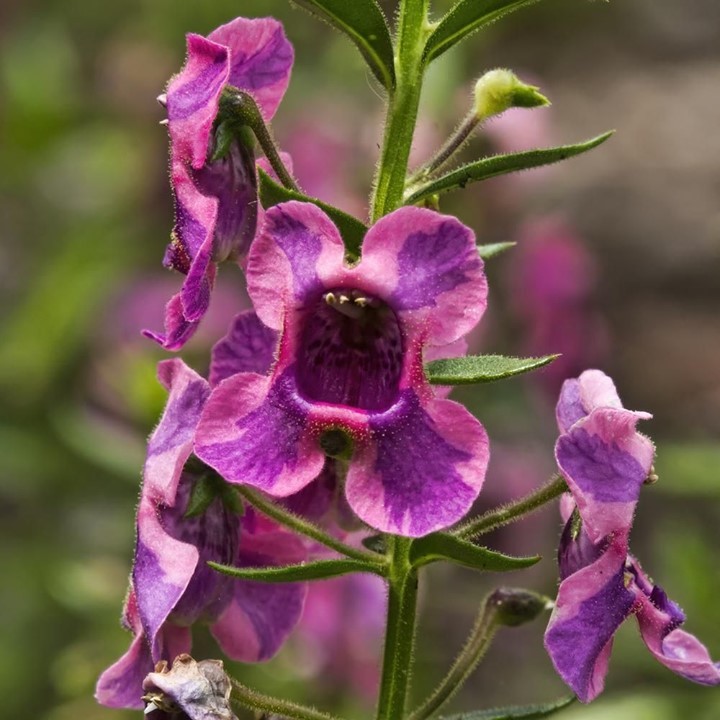
46. Nasturtium
Nasturtiums are native to North, Central, and South America, as well as some parts of Mexico. These bright-colored flowers require well-drained soil and can even grow without the support of fertilizers. You can water it around once or twice per week. Nasturtiums are found blooming around the late summer season and early fall season. You can the different shades of red, orange, yellow, and pink when it comes to the lovely Nasturtiums.

47. Clematis
Clematises are mainly originated from Japan and China and are able to grow up to 30 feet. Clematis can be found in varying shades of purple, pink, red, white, and blue. Prepare the soil that is slightly alkaline in nature as well as rich in organic matter. You need to keep the flower in the sunlight for at least 6 to 7 hours.

48. Impatiens
Impatiens’ are natives to the Eastern part of Africa and can grow up to 3 feet. They can be found in the different shades of red, white, blue, yellow, purple, and pink. You need to prepare enriched soil that is moist and well-drained. They do not cope well in the sun so you can provide them partial shade or even early hours of sun rays. Water at least twice per week.

49. Snapdragon
Snapdragons are natives of Europe, Canada, North America, and North Africa. They can grow up to 30 inches tall. There are around 18 different types of snapdragon varieties. Snapdragon can be found in the shades of pink, yellow, red, white, orange, peach, and purple. They need to be watered at least once a week for proper growth and need slightly acidic soil with moisture and rich nutrients. Snapdragons will bloom around the spring months.

50. Sweet Alyssum
Commonly known as Alyssum or sweet Allison, these beautiful flowers bloom around the later months of the fall season and the early months of the Spring season. You need to prepare the soil in a way that is slightly acidic in nature. Sweet Alyssums should be given partially to full sun exposure depending upon the climatic conditions. Provide at least water once or twice a week for proper growth.

51. Coneflower
Coneflowers are natives of Northern and Eastern America and can grow up to 4 inches tall. Coneflower can be found in different shades of pink, purple, white, peach, yellow, orange, and red. Provide water at least once a week, and the soil should not be too wet as it is not suitable for them. Keep the coneflowers in partial or full sun depending upon the climatic conditions.

52. Nemesia
Nemesia is a flower native to South Africa and can grow up to 3 feet. They need partial to full sun depending upon the climatic conditions. Prepare rich and moist soil with a slightly acidic nature. You can see Nemesia bloom around the spring seasons and early summer months.

53. Butterfly Bush
Butterfly Bush is a flower that is native to China and Japan, and it can grow up to 15 feet in height. Provide water at least once a week, along with dry and slightly acidic soil. They bloom all year long, right from the hot summer months to the cold fall months. Butterfly Bushes require full sun exposure for good growth.

54. Different Types of Flowers- Dianthus
Dianthus shares its native lands in many countries and continents like North America, South America, North Africa, South Africa, to Asia. It can grow up to the height of 3 feet. Dianthus can be found blooming in the spring season. Keep the soil moist, well-drained, and provide partial sun for good growth. They need frequent watering, once every two days for hot summer days, and reduce the supply for winter months.

55. Calibrachoa
Calibrachoa is native to South America, Mexico, and Southwestern parts of America and can grow up to 6 inches. They require partial to full sun along once a week of watering. With a moist, rich, and well-drained soil Calibrachoa’s can bloom healthily around the late fall and early spring season.

56. Portulaca
Portulacas are native to South Africa and can grow up to 13 feet. Portulaca requires a sandy-type soil that is well-drained and full sun exposure. Watering the plant once a week is more than enough for proper growth. The spring season is the blooming season for this beautiful flower.

57. Daffodil
Daffodils are native to the Northern part of Europe and are grown all around the world. They can grow up to 40 cm. You can keep the plant both in full sun exposure and partial sun exposure. The blooming season is around the late winter months and early spring months. Daffodils need to be watered once a week at least for proper growth.

58. Black-eyed Susan
Black-eyed Susan is a native flower to certain parts of China, all over North America. They bloom right from the summer season to the early fall days. It is best that you provide full sun exposure as well as water them once a week. Provide slightly acidic or alkaline soil as per your preference for proper growth.

59. Dead Nettle
Dead Nettles are natives of Europe and Asia and can grow up to 8 inches. You can find them blooming right from May to June and sometimes July. It is best to keep the flower in partial shade and provide it with moist and enriched soil. Water your Dead Nettles regularly for good growth.

60. Calendula
Calendulas are also known as pot marigolds, although the two are very different in nature. Calendulas are native to southwestern Asia, Europe, and the Mediterranean. Water regularly at least twice or thrice a week, along with providing it full or partial shade as per the climatic conditions. Prepare moist, well-drained, and nutrient-rich soil. The blooming season starts from May and goes till the early days of the fall season.

If you liked this post then, make sure you check out some of our similar posts!
Feng Shui Tips For Your Home To Attract Wealth and Money



